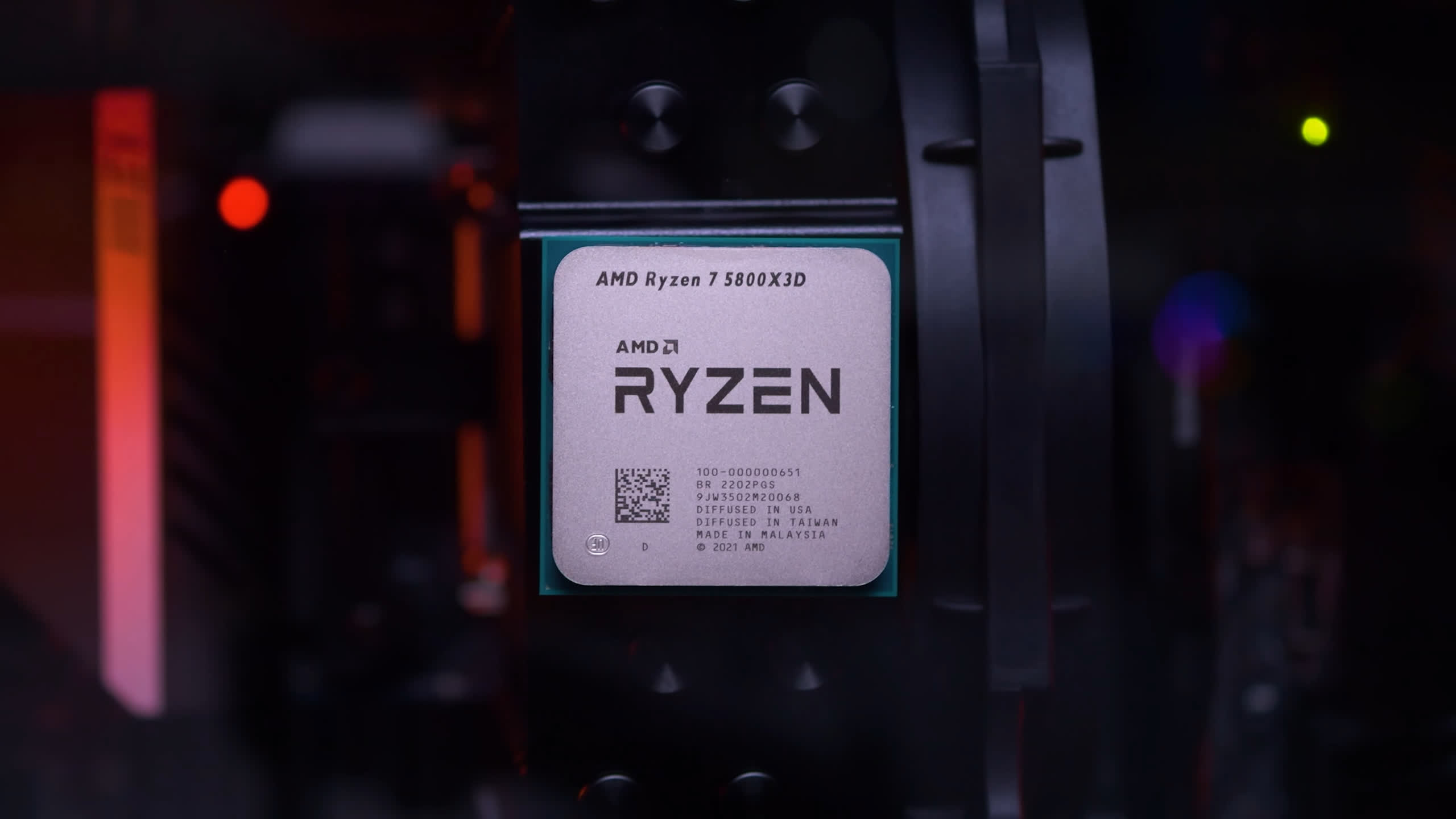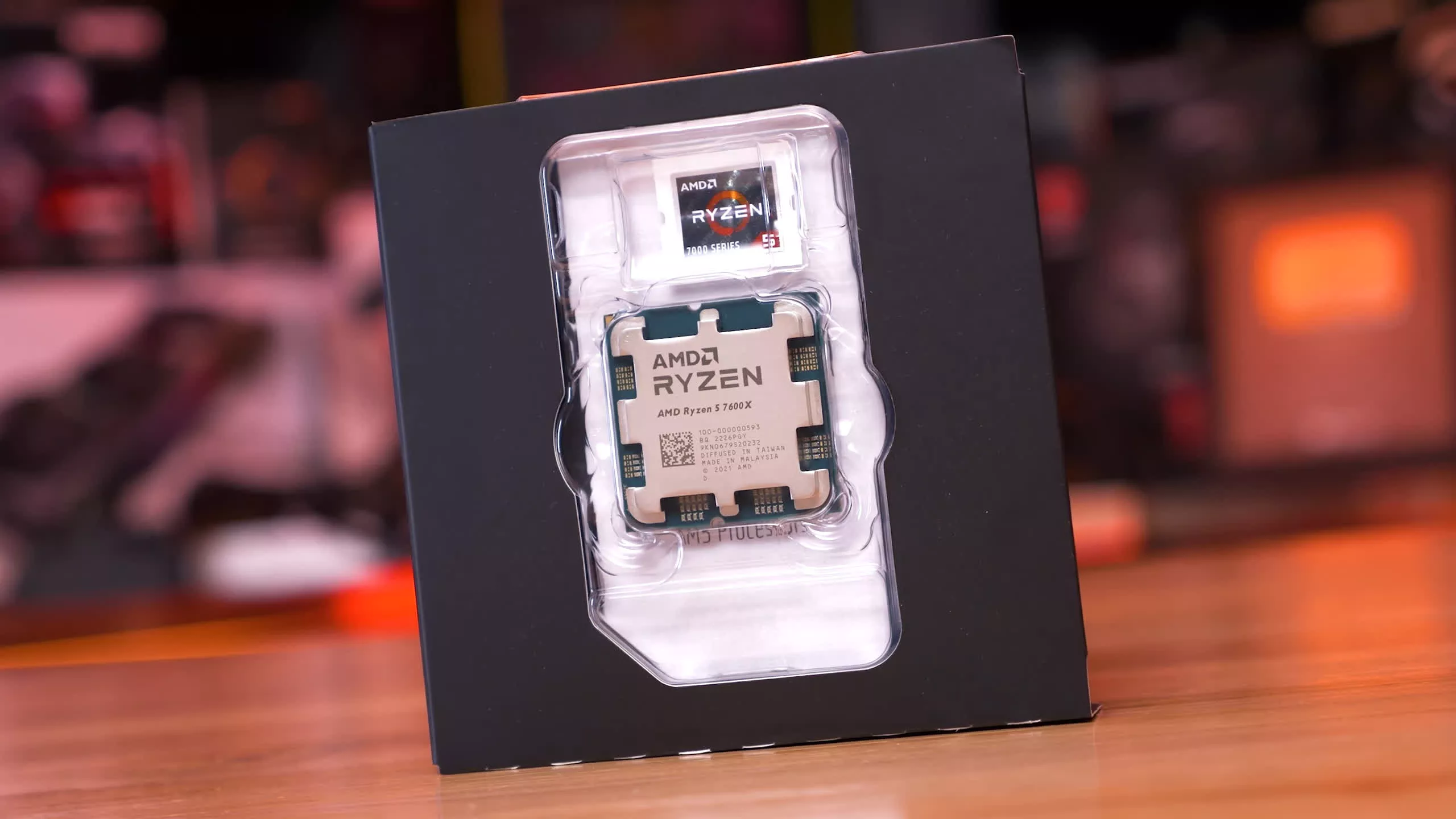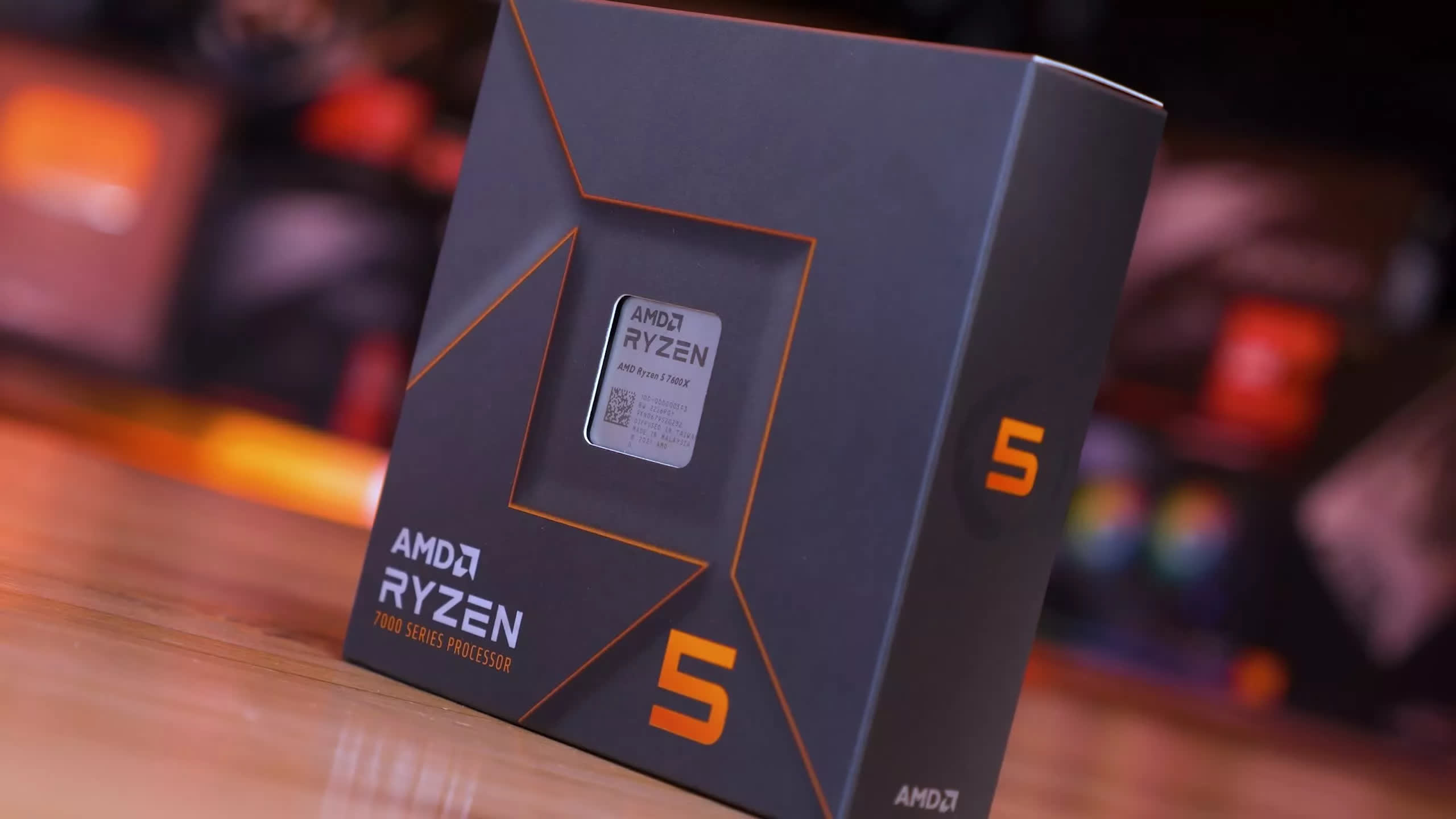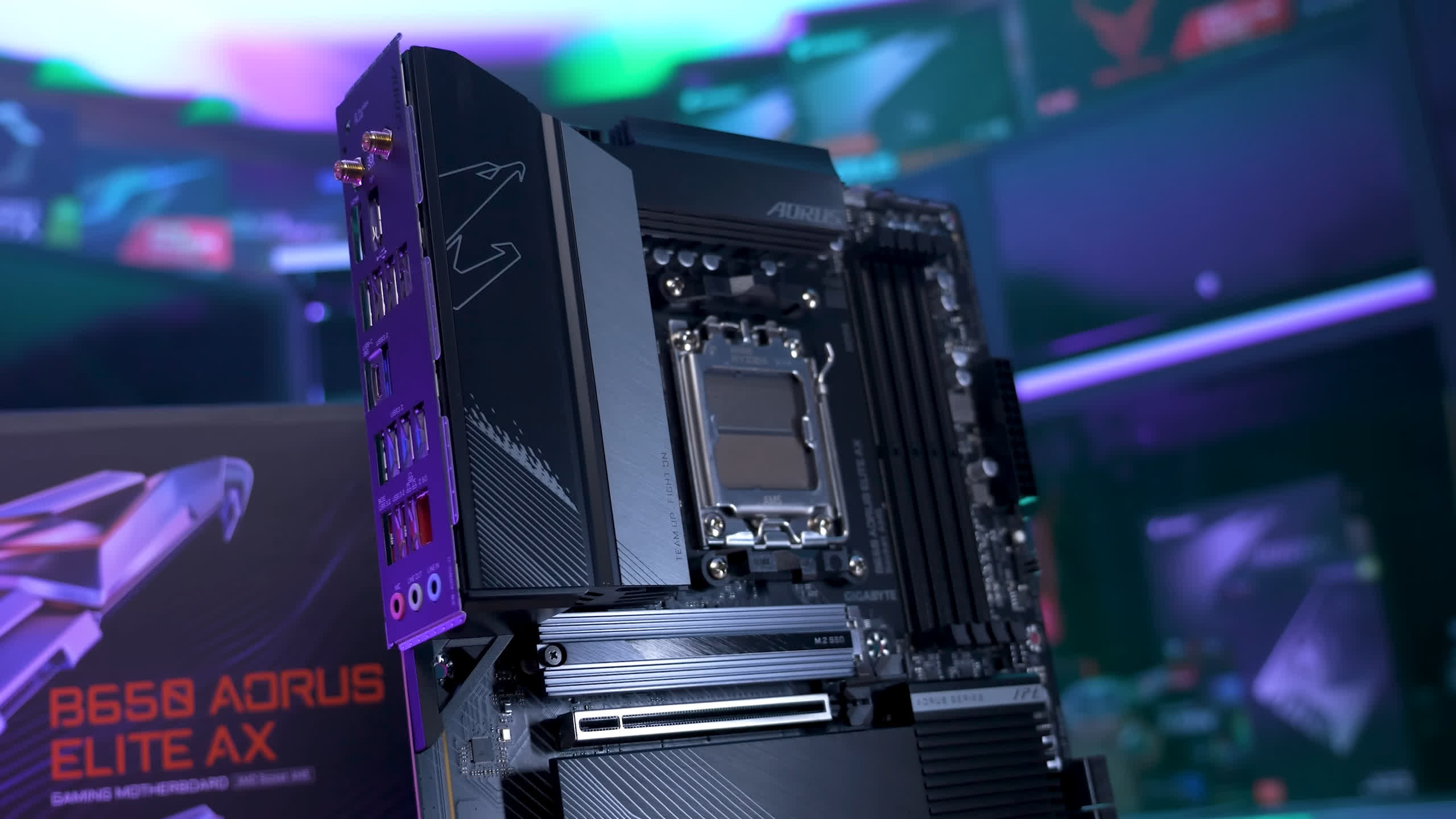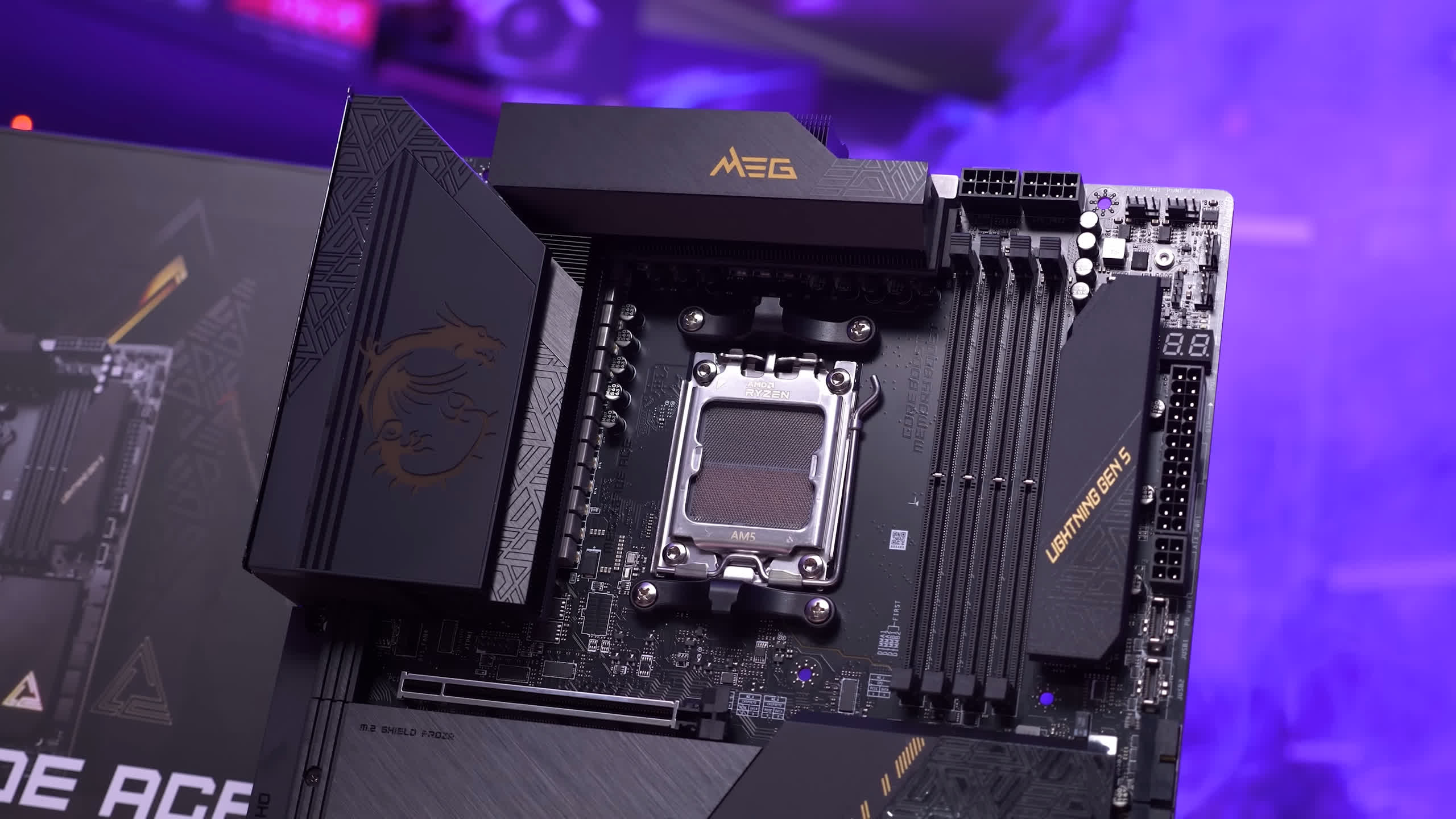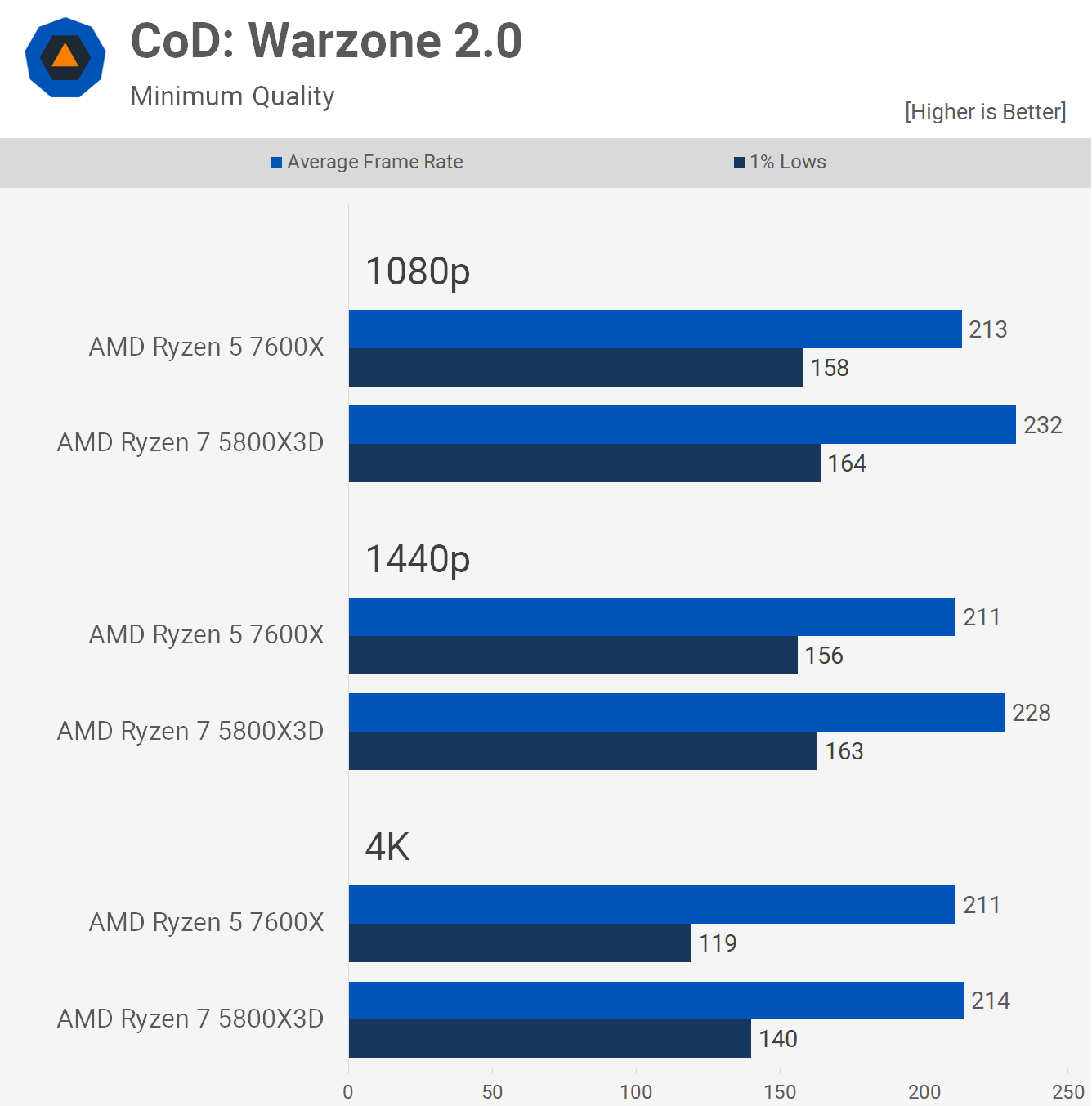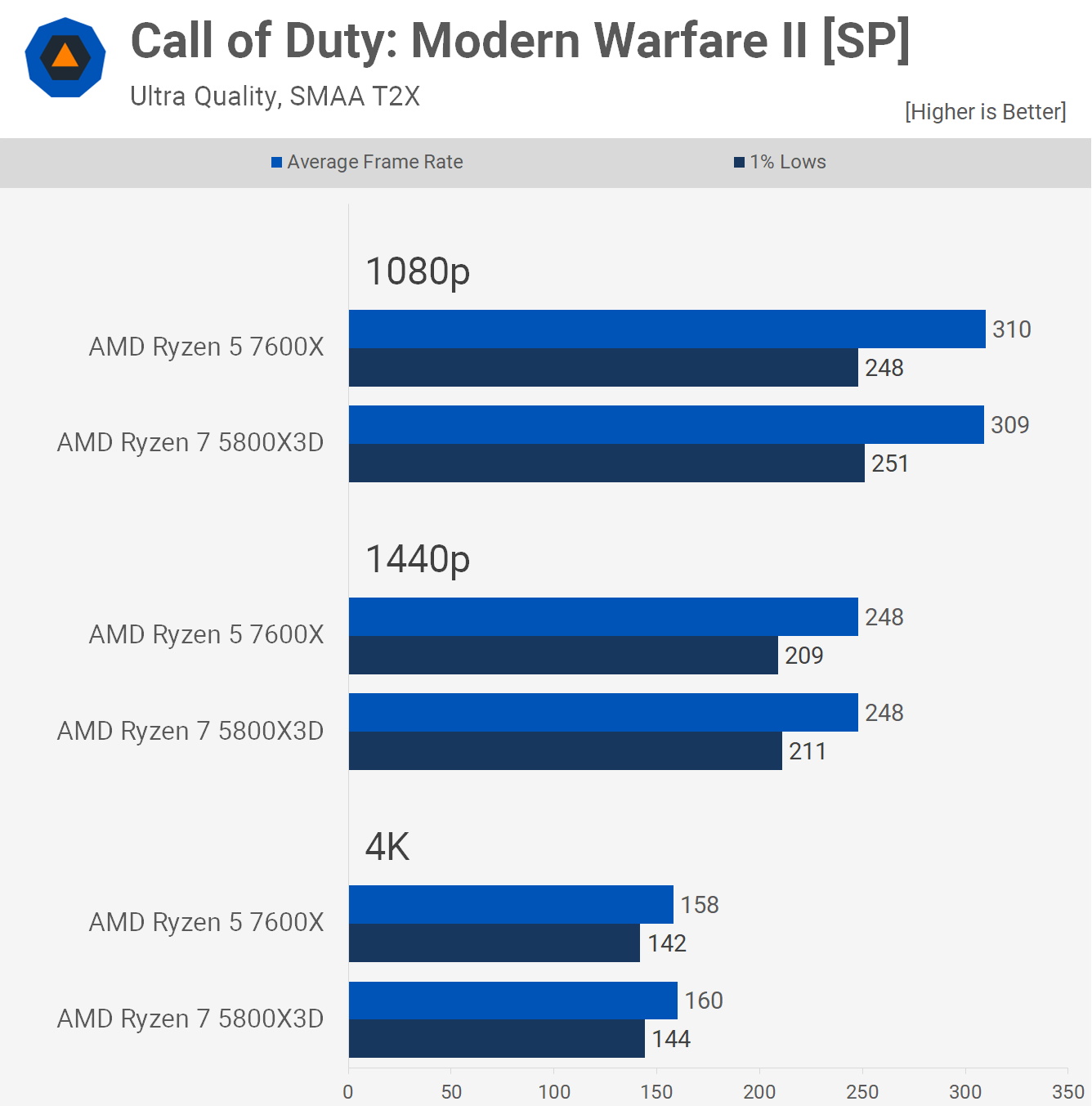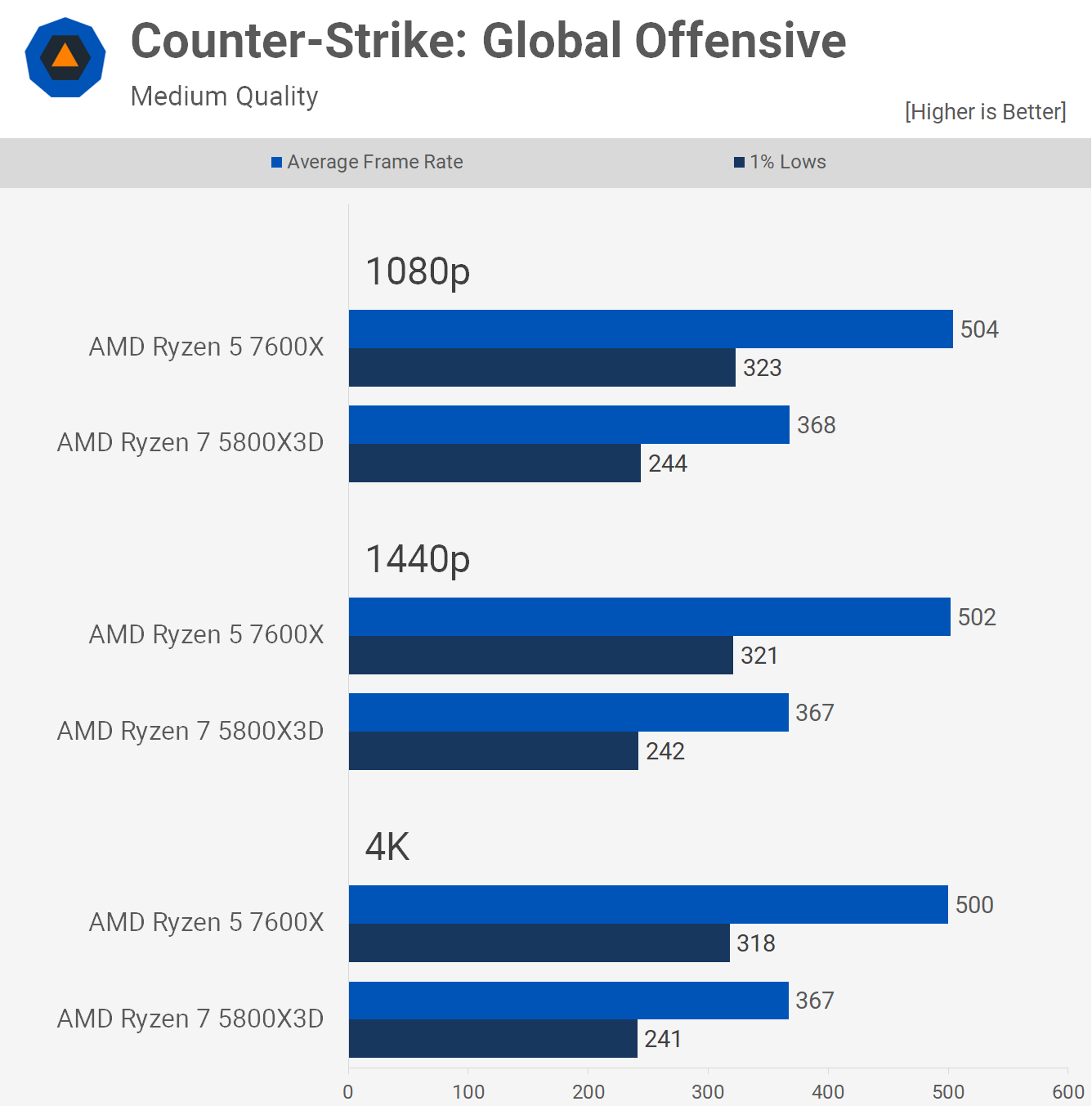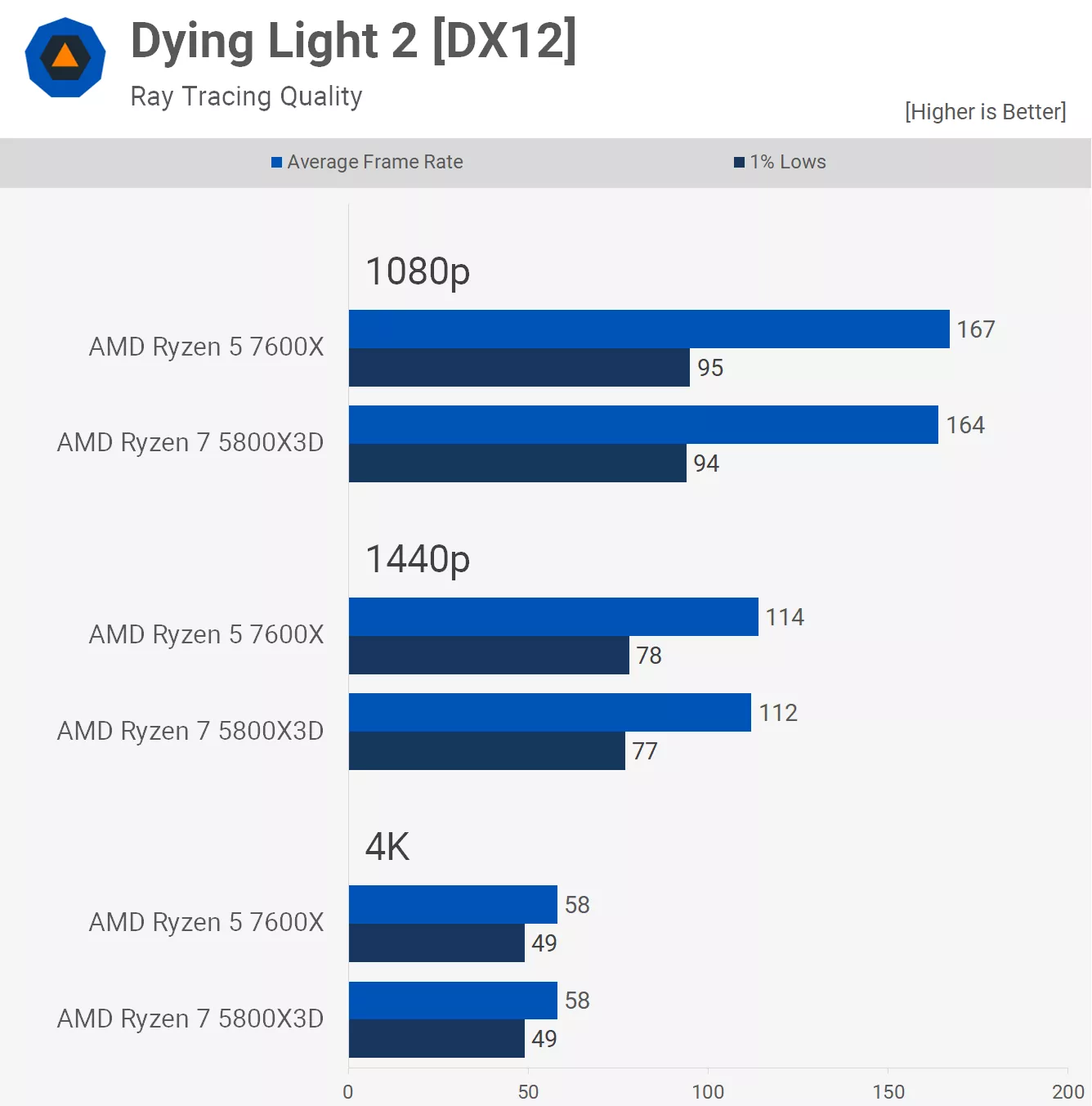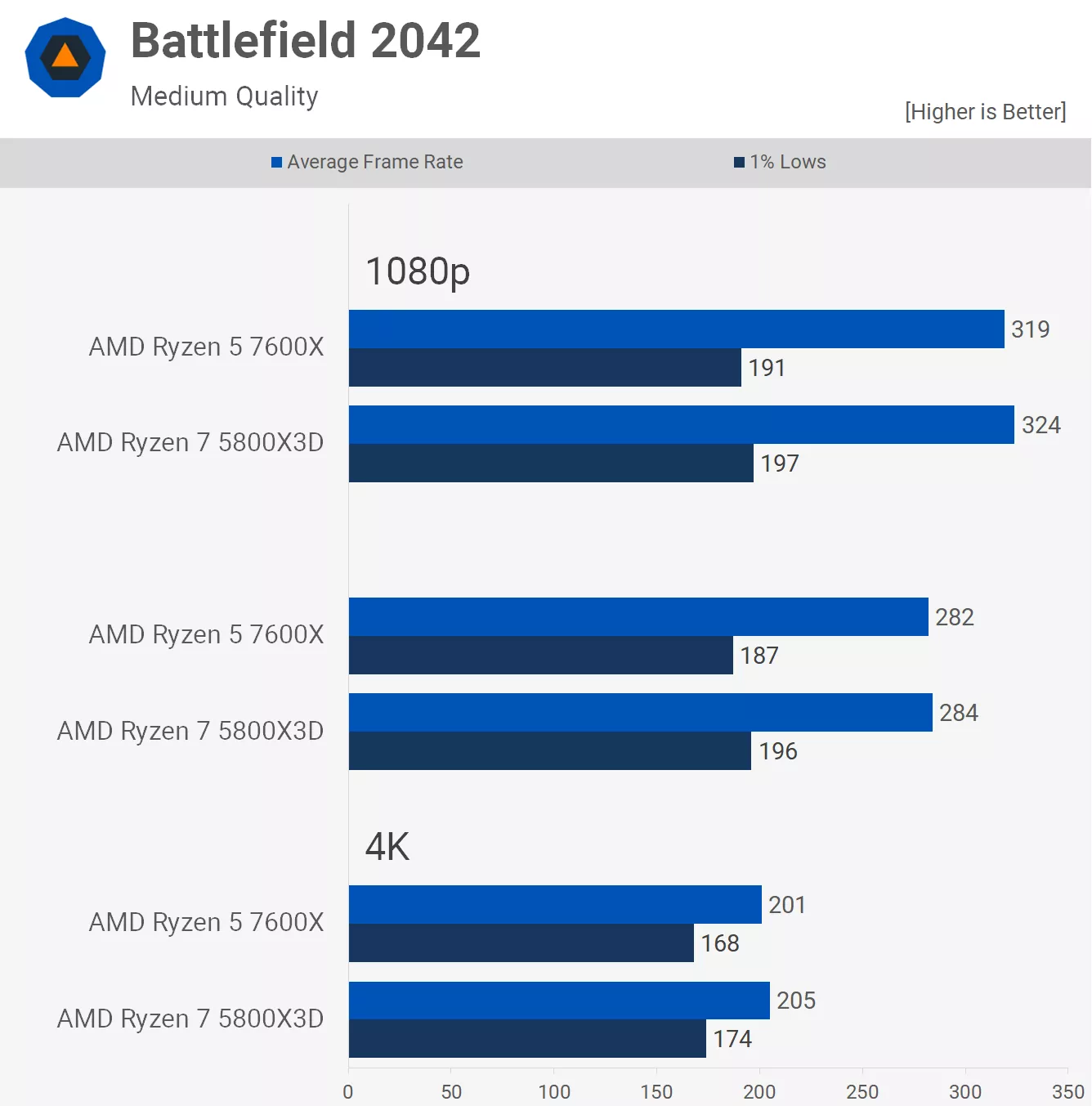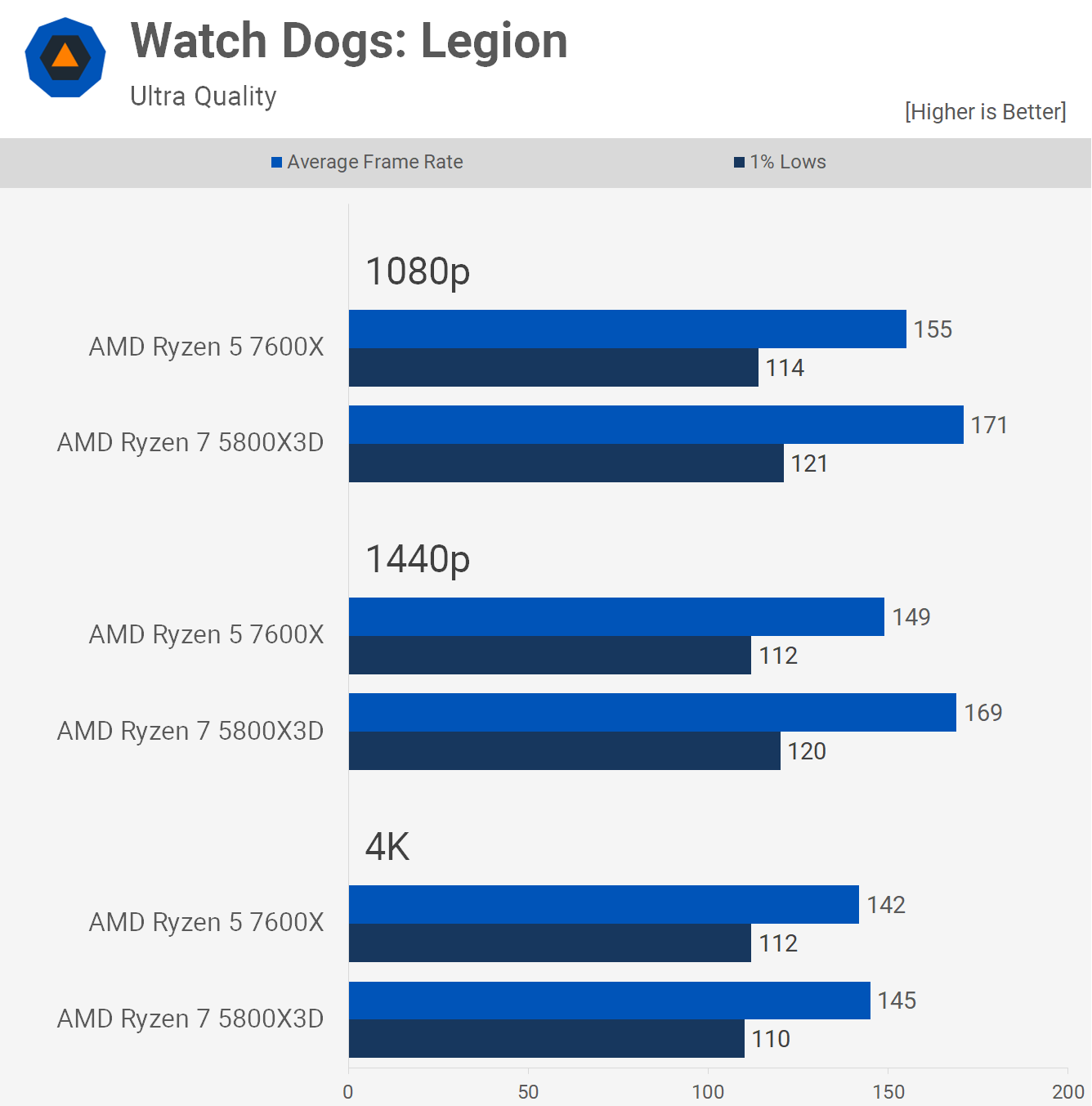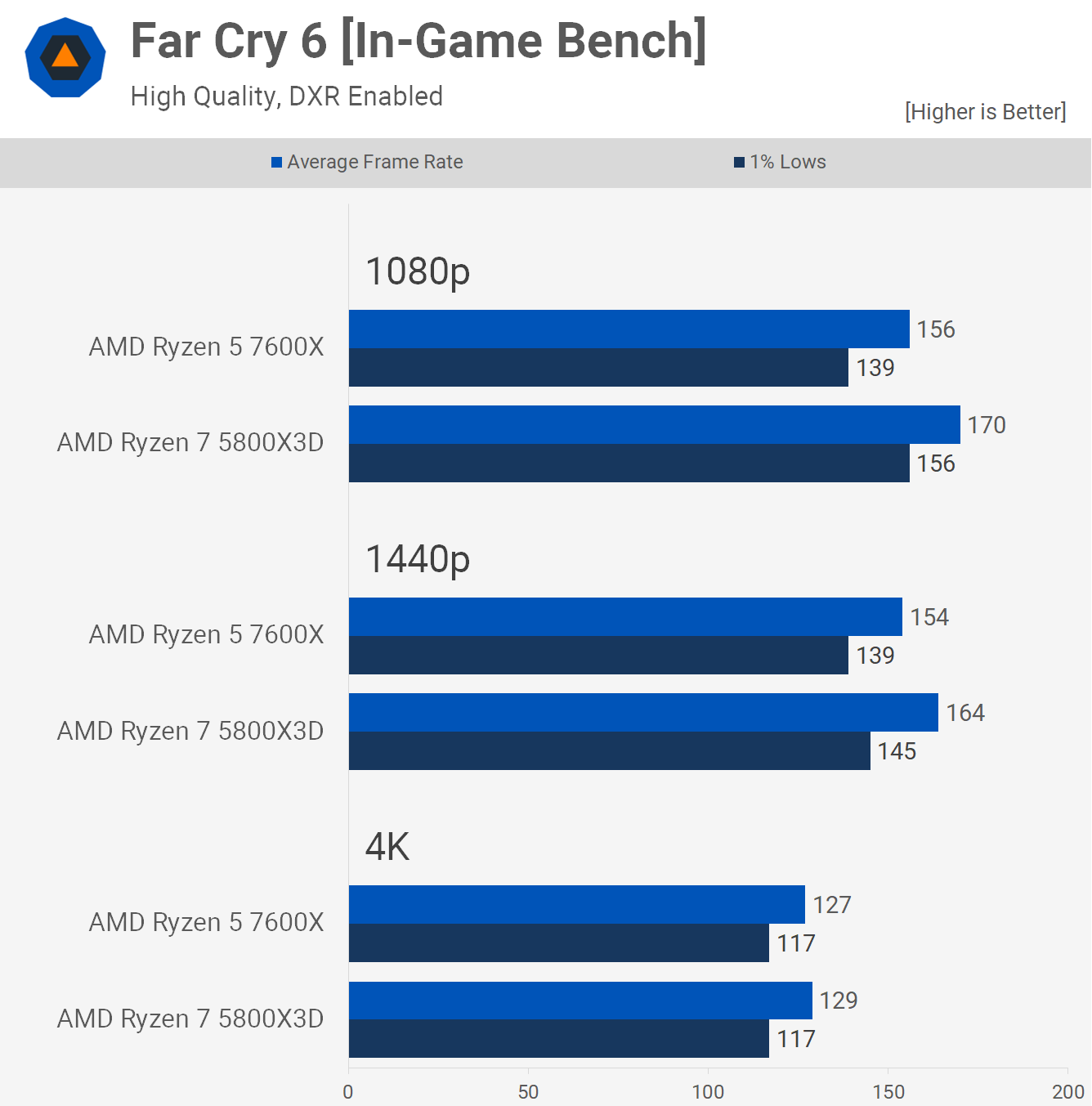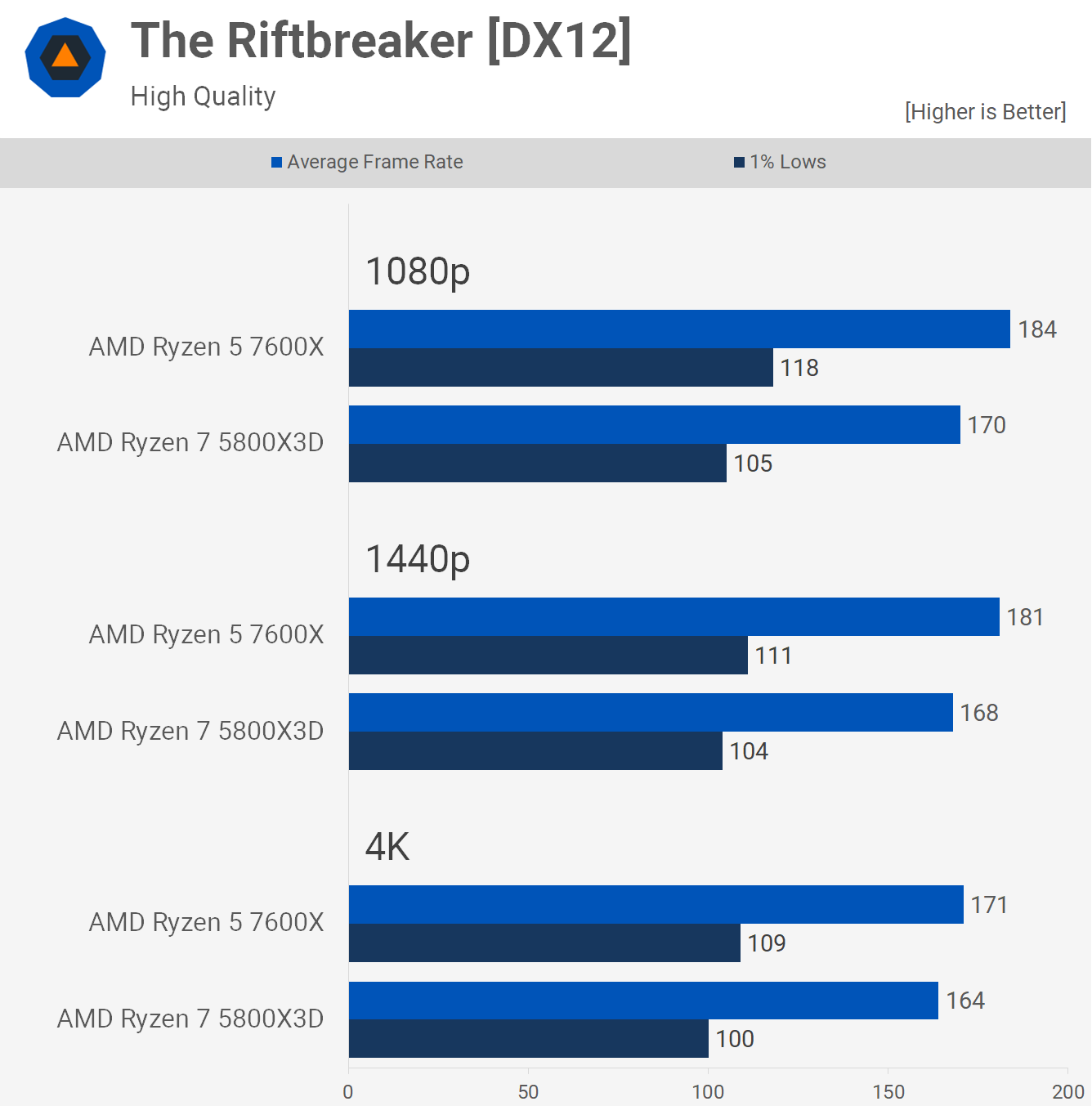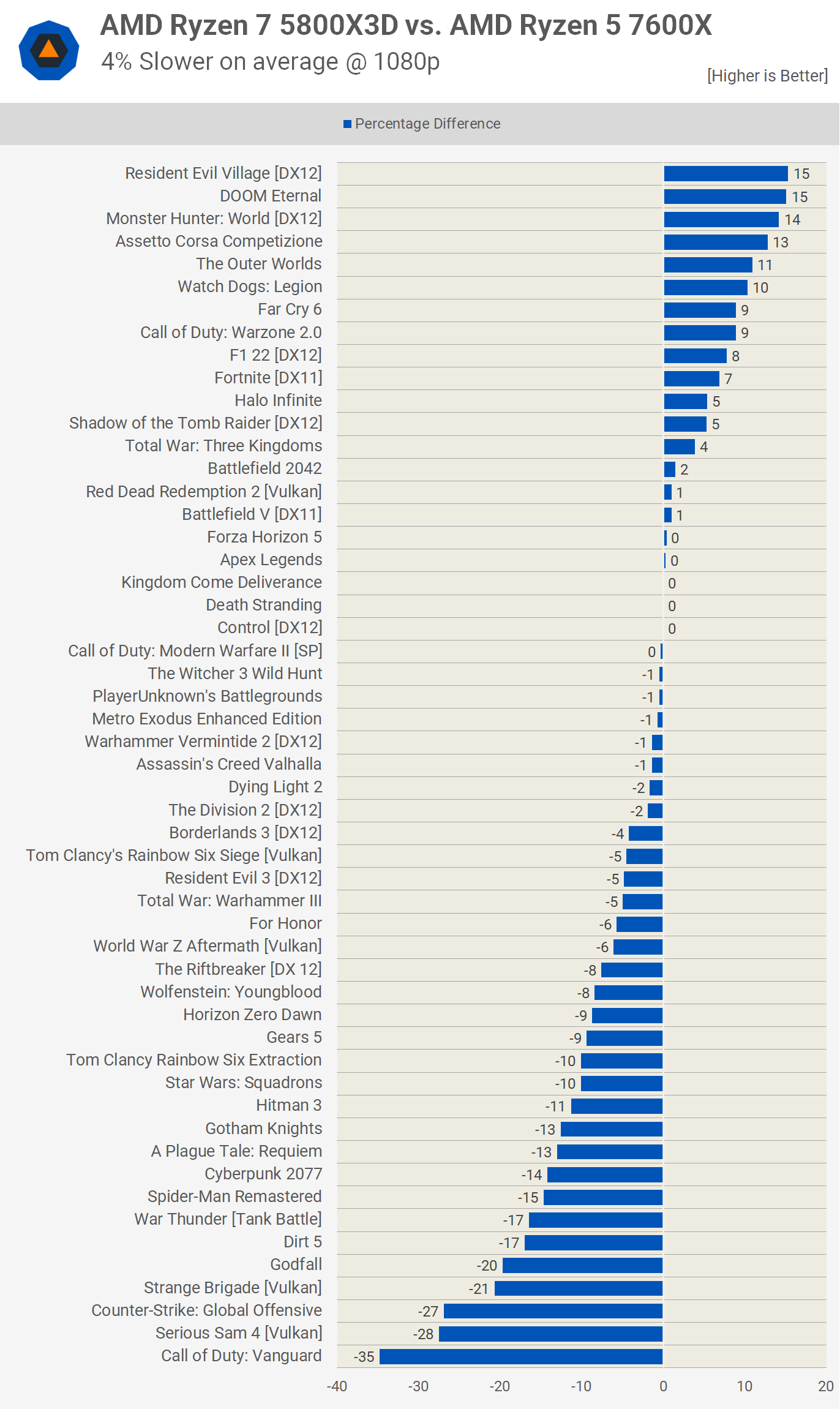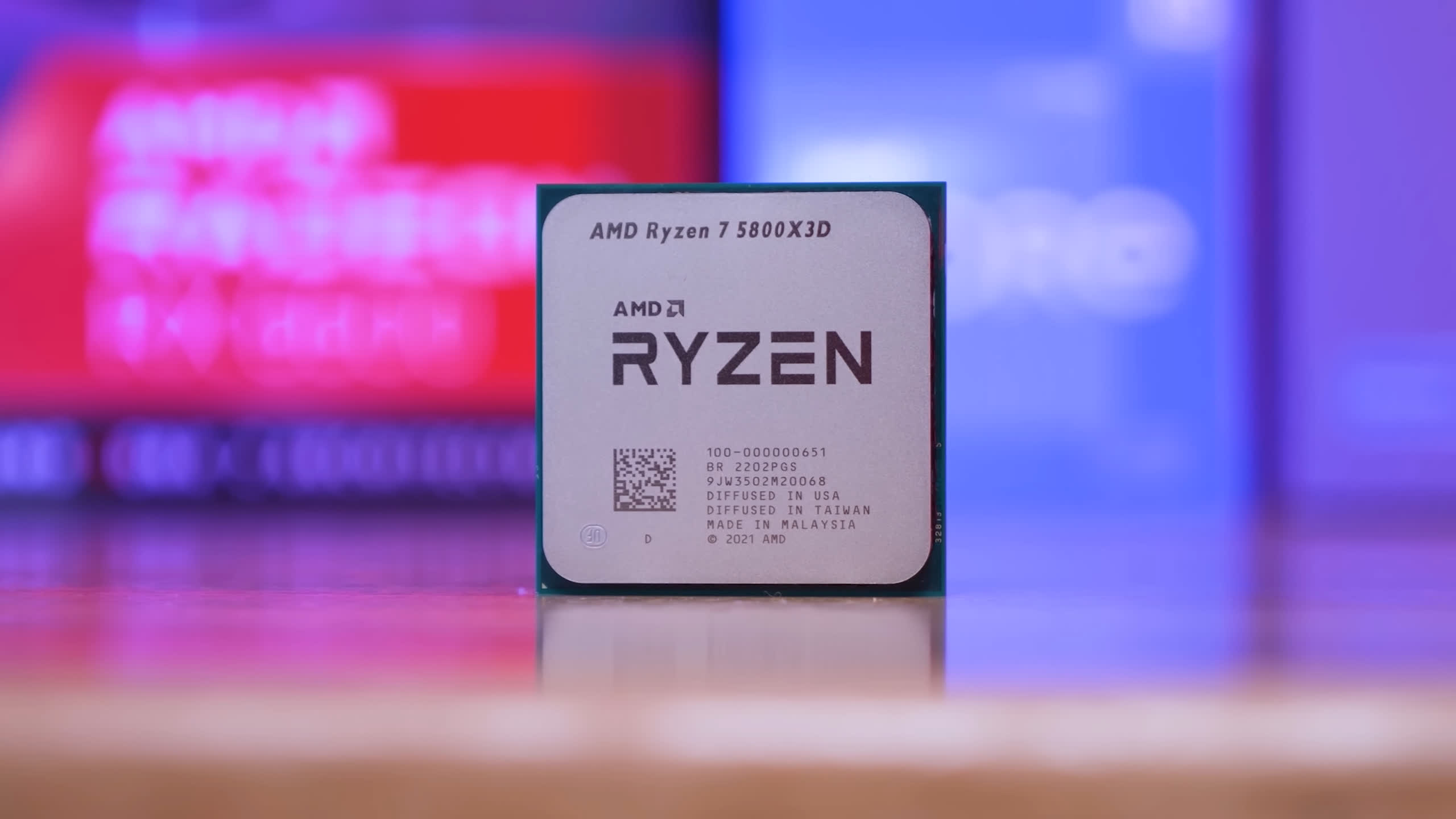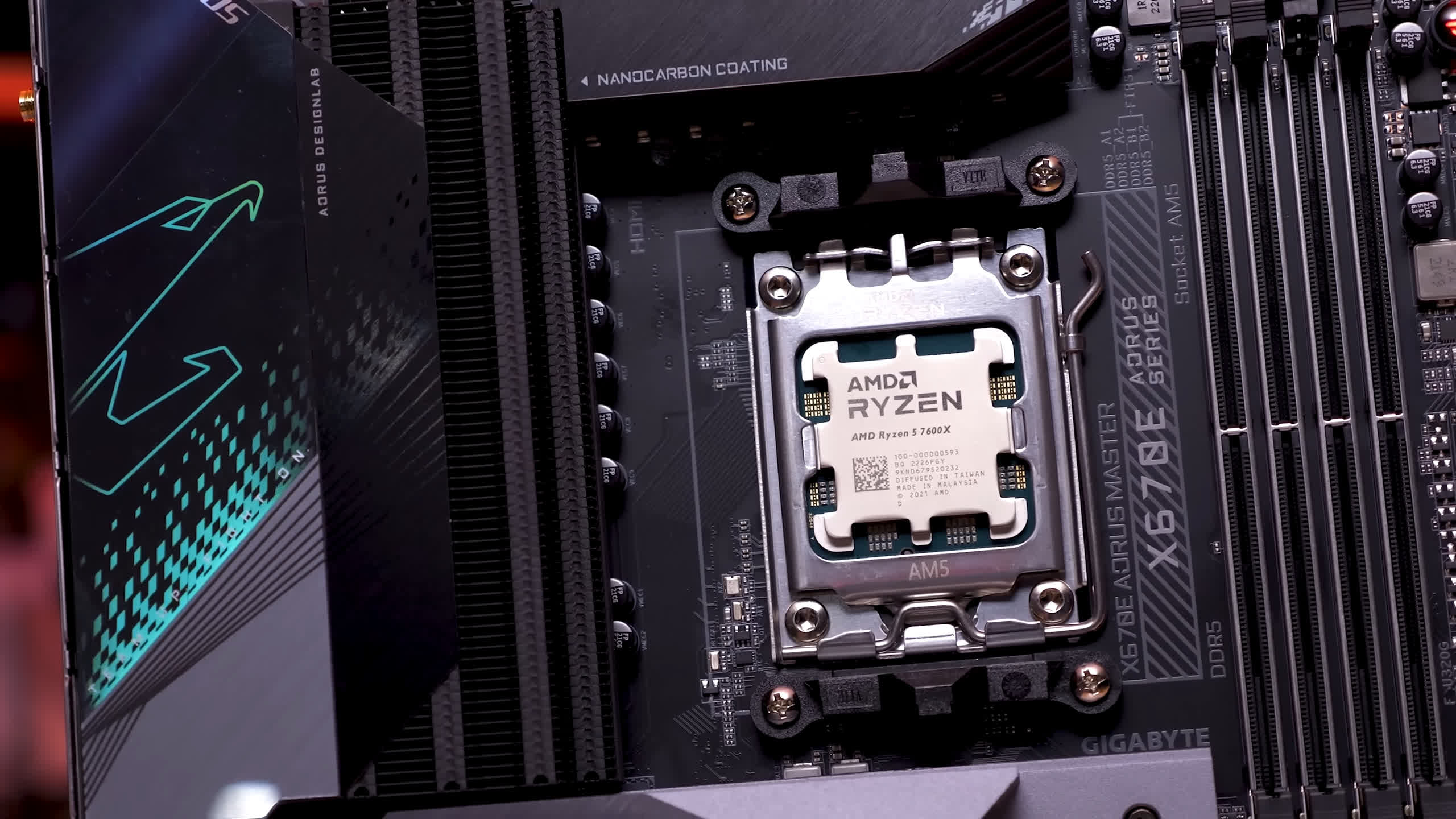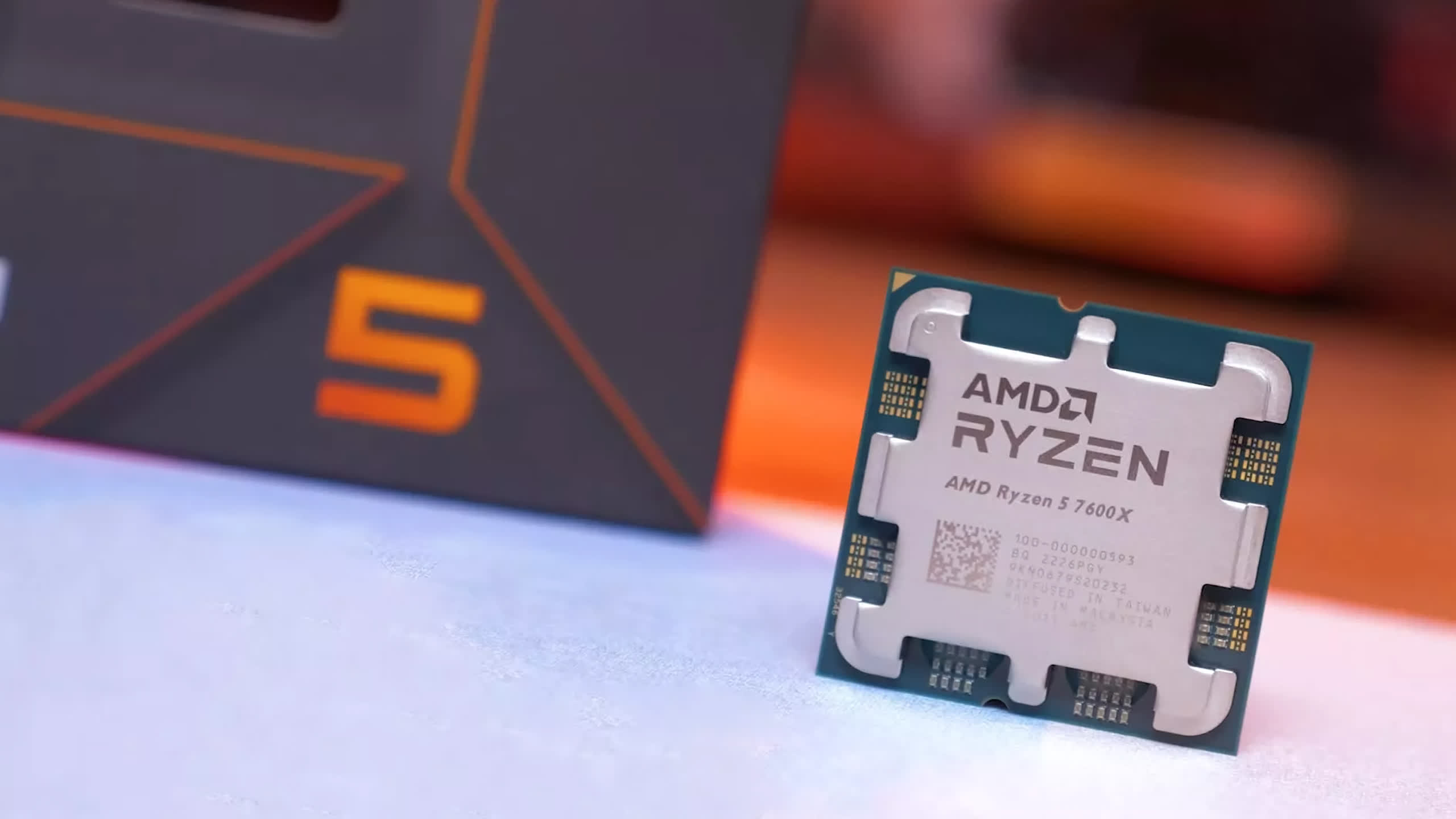
[ad_1]
Today we’re taking the fan favorite Ryzen 7 5800X3D and comparing it head to head with the new Ryzen 5 7600X in over 50 games. We recently put together our updated CPU buying guide that focused on both platform upgrades and complete system builds. In that feature, to the dismay of many, we largely overlooked the 5800X3D, as we don’t feel investing in AM4 right now is the right move when spending more than $300 on a CPU.
As good as AMD’s AM4 platform is, unless you’re already on it or are looking at budget builds, it makes no sense investing heavily on it at this point. You could argue the same is also true of Intel’s dead LGA 1700 platform that supports the 13th-gen Raptop Lake parts, but those CPUs are mighty powerful and offer strong productivity and gaming performance, making them worthy options for new system builders.
For those of you who disagree with our recent 5800X3D assessment, here’s a 5800X3D vs 7600X head to head which should present a lot of interesting data points. As of writing, the 5800X3D can typically be bought for $380, though there are listings as low as $330.
In contrast, the newer Ryzen 5 7600X which landed with a $300 MSRP has been slashed as low as $245. These are meant to be temporary holiday season price cuts, but we believe we’ll find these updated prices to become permanent, if not for the 7600X it will be for the soon to be released non-X version.
All in all, if we take the current low prices for each model, the 7600X is around 30% cheaper than the 5800X3D in the US, and looking at retailers in Europe and Australia we find a difference around 20% cheaper in the 7600X’s favor as well.
Now let’s take in consideration AM4 vs. AM5 platform costs. In the case of AM4, you can get a really nice B550 board like the MSI MAG B550M Bazooka for $120 or a usable B450 model for $100. Then you’re looking at $120 for a 32GB kit of DDR4-3600 CL16 memory, and that’s what we’ll be using for testing today.
So if we factor in the cost of the B550 board and go with the lowest 5800X3D price right now, that package comes out at $570, or $620 using more typical CPU pricing.
Meanwhile AM5 motherboard pricing still kind of sucks and it’s not easy to snap up a B650 board for much under $200, with just a few options to choose from. Ideally, you’d probably want something like the Gigabyte B650M Aorus Elite AX which costs $200. Then there’s the memory. The DDR5-6000 CL30 kit we use for testing costs $225, though there are CL36 kits selling for as little as $150, but without testing we’re not sure how much performance you’re giving up there.
For the performance shown in this review, you’ll need to spend $225 on the memory, taking the total build cost to $665, a 7% increase over what you’ll typically pay for the 5800X3D package, or up to 17% more if you go off best pricing for the 8-core processor.
In our opinion, paying a small premium for access to the AM5 platform makes sense, you’re getting DDR5 memory support, a much better upgrade path, PCIe Express 5.0, better USB and M.2 support and a higher quality motherboard at the prices quoted here. So it’s not really an apples to apples comparison in terms of features and board quality.
It’s also possible to reduce the price premium by using G.Skill’s Ripjaws S5 Series DDR5-6000 CL36 or even CL32 memory, but at this point we can’t fully comment on performance as we don’t have access to those memory kits.
We should probably get into the benchmarks as we know that’s what you are here for. So without further ado, let’s quickly go over the test system specs and then jump into test results.
The Ryzen 5 7600X was tested on the MSI MEG X670E Ace motherboard with 32GB of DDR5-6000 CL30 single rank memory, while the Ryzen 7 5800X3D was tested on the MSI MPG X570S Carbon Max Wi-Fi using 32GB of DDR4-3600 CL16 dual rank memory. The graphics card of choice is the GeForce RTX 4090, running Windows 11 and Resizable BAR enabled for both configurations. Okay, let’s get into it…
Benchmarks
We’re going to start with the Call of Duty: Warzone 2.0 results because we excluded the 5800X3D from our recent Warzone 2.0 testing, instead focusing on Zen 4 and Raptop Lake processors. Anyway, we now have the 5800X3D and it is indeed faster than the 7600X in this title, delivering 9% more performance at 1080p, 8% more at 1440p and then basically the same performance at 4K, though the 1% lows were quite a bit better, though due to how difficult this multiplayer game is to test, the margin could be similar to what was shown at 1080p and 1440p.
Either way the 3D V-Cache processor is typically faster in this game, and this will be important for those using competitive quality settings.
As for the single player portion of Modern Warfare 2, it doesn’t matter which of these two CPUs you use, both are capable of driving high frame rates when armed with a high-end GPU, and performance overall was much the same. Not only that, but north of 144 fps is more than enough for a highly enjoyable single player experience.
Clock frequency plays a key role when it comes to CS:GO performance, so here the 7600X has a serious advantage, allowing it to drive 37% more frames in our testing and even at 4K the results are CPU bound.
A Plague Tale: Requiem is a new title to our battery of benchmarks and this one does play much better using the 7600X, and even so using the faster Zen 4 CPU with ultra quality settings, the game was still heavily CPU bound at 1080p and even 1440p.
The 7600X was 15% faster at 1080p and 20% faster at 1440p while the margin was reduced to just 4% at 4K, though 1% lows were still quite a bit stronger with a Zen 4 part leading by a 10% margin.
This isn’t a game that requires big frame rates and frankly over 90 fps at 4K offers an amazing gaming experience, but if you want to maximize performance with a high-end GPU, the 7600X does a much better job of that.
Dying Light 2 isn’t very CPU demanding and as a result all testing was GPU limited, even at 1080p. Regardless of which CPU you use, performance is almost always going to be identical.
The F1 22 results are interesting, not because you need over 300 fps to enjoy this game, even in a competitive setting, but because the 5800X3D was up to 8% faster at 1080p, but slightly slower at 4K and this was highly repeatable.
At 4K, where performance becomes largely GPU bound, the 7600X is able to eke out a little more performance from RTX 4090, which is interesting.
PUBG plays similarly using both CPUs, performance is much the same and while 1% lows can be sketchy in this title, the game did seem to play quite well using either CPU.
Battlefield 2042 is another game that’s difficult to test, though custom servers using Portal do make it a lot easier. Anyway, here we can see that the 5800X3D and 7600X are similar in terms of performance, the 5800X3D had a slight edge, but it’s nothing you’ll notice when gaming.
The 5800X3D has proven in previous tests that it’s very fast for the ACC driving simulator, and even when compared to next-gen hardware, it still punches well above its weight, beating the 7600X by a 13% margin at 1080p and 16% at 4K. Impressive stuff from AMD’s Zen 3 based 3D V-Cache part.
The 5800X3D also performs well in Watch Dogs Legion, besting the 7600X by a comfortable 10% margin at 1080p and 13% at 1440p. Then at 4K the results are GPU limited and as a result the 7600X and 5800X3D are neck and neck.
Next we have the Cyberpunk 2077 results and this title heavily favors the 7600X. The new Zen 4 CPU enjoyed a 17% performance advantage at 1080p and 16% at 1440p. Then as we typically see performance at 4K is much the same, with both CPUs allowing for just over 100 fps on average.
Moving on to Far Cry 6 which we don’t benchmark using the built-in tool as it’s buggy and often produces inaccurate results, performance also degrades over time, so it’s just best to test in-game.
Doing so sees the 5800X3D beat the 7600X by a 9% margin at 1080p and 6% at 1440p. Then as usual the 4K data is GPU limited, so performance is much the same.
Halo Infinite’s performance was very similar using either CPU, though the 5800X3D was slightly faster at 1080p and 1440p, delivering 5% more performance.
Performance was nearly the same at the more GPU limited 4K resolution, though as was seen in F1 22 the 7600X was repeatedly slightly faster at the higher resolution.
Moving on to Spider-Man Remastered, we find heavily CPU limited performance for both CPUs at 1080p and 1440p, though the 7600X was still 17% faster than the 5800X3D.
We’ve seen that DDR5 makes a huge difference in this title as it’s very memory bandwidth sensitive, so this could be a big part of the reason for why the Zen 4 CPU is much faster in this instance. Still, by the time we jump up to 4K we are heavily GPU limited with the RTX 4090.
The Riftbreaker can be heavily CPU bound and here see that’s certainly the case. The 7600X was 8% faster than the 5800X3D at 1080p and 1440p while that margin was reduced to 4% at 4K, but even so Zen 4 maintained a lead over AMD’s previous-gen 3D V-Cache part.
Power Consumption
The 7600X and 5800X3D are surprisingly similar when it comes to power consumption when gaming. We are looking at total system power usage in the graph below and at most we’re looking at single-digit margins.
There are examples where the 5800X3D uses more power and examples where the 7600X uses more power, so we’d say overall they’re very close when it comes to power usage.
50+ Game Average: 1080p, 1440p and 4K
Here’s our look at overall gaming performance, first using the 1080p data we gathered. On average across the 53 games tested, the 5800X3D was a mere 4% slower. It’s true that there are more games where the 7600X beat the 5800X3D by a convincing margin, but overall they are very similar…
There are just half a dozen examples where the 5800X3D was faster by a 10% margin or greater, capping out at a 15% margin. Meanwhile the 5800X3D was slower by a 10% margin or greater in 14 of the games tested, with the performance deficit topping out at 35%.
At 1440p we are slightly more GPU bound, so the overall margin dropped by a percent and the 5800X3D was 3% slower on average. This time there are just 2 examples where the Zen 3 part was faster by a 10% margin or greater and 10 where it was slower by a 10% margin or greater.
But the important takeaway is that overall performance was similar using either CPU, and remember we are using an RTX 4090.
At the 4K resolution we see that for those of you predominantly playing single player games, it doesn’t matter which of the two CPUs you use, both are plenty fast. So ignoring the GPU used, single player games typically prioritize visuals over frame rates within reason, if the frame rate is acceptable the primary load will be placed on the GPU to deliver top notch visuals, and as a result performance will almost always be GPU limited, which is what we’re looking at here.
With the exception of a few outliers, both CPUs will deliver the same gaming experience. For multiplayer games though, especially those targeting competitive quality settings, the 1440p and 1080p data is more relevant, even for those with slower GPUs as the resolution and quality settings will be reduced to maximize FPS. For example, you would see similar, if not the exact same margins shown here with an RTX 3070 in games like Counter Strike, as these titles are heavily CPU limited.
What We Learned
After throwing a boatload of games at both CPUs in a massive head-to-head we we can draw a few conclusions. Yes, the Ryzen 7 5800X3D is very impressive for a previous generation CPU that can now be had for less than $350. That’s true and it’s why this part became an overnight success.
But for someone building a brand new system today, or executing a platform upgrade and aren’t already on AM4, we don’t think the 5800X3D is all that appealing. Despite AM5 motherboards and memory costing more, once you tally up all costs involved, the difference isn’t significant.
If you were to purchase the absolute cheapest AM4 motherboard with a budget 16GB DDR4 kit you could build a 5800X3D system on the cheap — certainly much cheaper than an AM5 system — but at that point you’re better off with the Ryzen 5 5600 which costs under half that of the 5800X3D. Granted, that would be an entirely different class of build, at an entirely different price point offering a much lower level of CPU performance.
The concept behind the 5800X3D is to achieve high-end gaming performance while spending as little as possible, and it still achieves that goal successfully. But value goes beyond a basic price to performance comparison, for example, you should factor in system longevity, features, and build quality, especially when spending over $500 for a CPU, motherboard and memory combo.
The 5800X3D achieves that objective best when already on AM4, as it’s an easy and relatively inexpensive drop in upgrade that offers a big boost in performance from most other AM4 CPUs.
But as we’ve said before, for new system builders or upgrades outside of AM4, the 5800X3D offers a lot less value, and in such scenario we would opt instead for AM5 or possibly Intel’s LGA 1700 platform. If AM5 turns out to be as successful as AM4, then the right choice will be rather obvious. Sadly, we don’t know where AM5 goes over the next few years, but we know it has a chance to go somewhere while AM4 and LGA 1700 won’t have that chance.
It’s also worth noting that the AM5 bet is hardly a big gamble for new system builders, the 5800X3D, 7600X and 13600K will all cost you roughly the same amount of money when opting for a decent quality motherboard, and for gamers, performance across all three is close enough that it simply doesn’t matter, arguing about which of these three CPUs is best for gamers is the very definition of a waste of time.
Also, AMD slashing the price of the 7600X by 20% has really helped its desirability and this is exactly what we called for in our day-one review, so we’re glad AMD listened. For it to become a no-brainer we still need more affordable AM5 boards and more affordable DDR5 memory, so fingers crossed prices continue to slide.
Shopping Shortcuts:
[ad_2]
